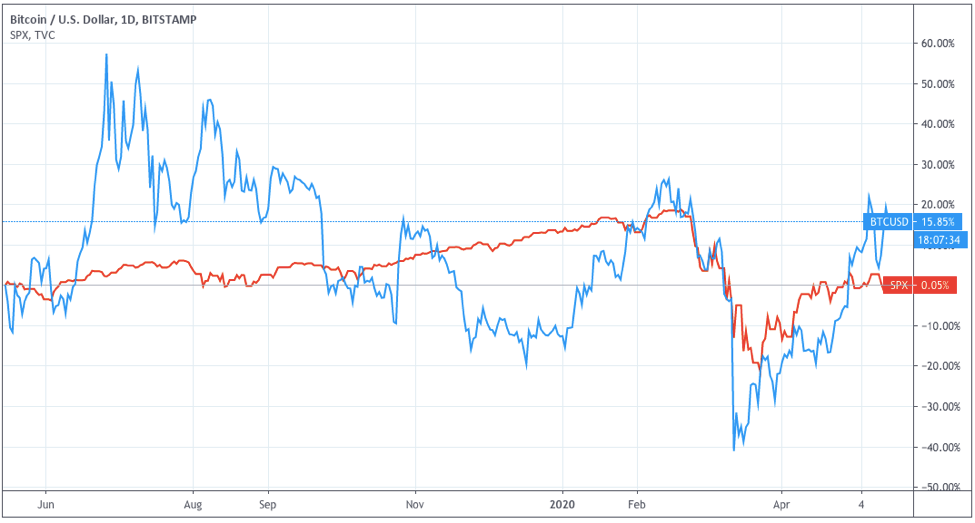
In 2012, Bitcoin initially awarded 50 BTCs per mined block, but a “halving” has occurred every four years, which will continue happening until the number of BTCs eventually hits a cap of 21 million. There are currently 630,000 Bitcoin blocks mined with over 18 million BTCs currently in existence.
Bitcoin miners operate and scale through tight profit margins based on how efficiently they can mine cryptocurrencies, offset by computing costs, but the “halving” of the BTC will drastically impact the sustainability of some of these miners who now have 50% of their top line revenue cut.
As the volume of new bitcoins being added to the supply decreases, its price is expected to increase, but as the protocol is a known feature that is a part of the Bitcoin algorithm, the effects of the “halving” may already be priced in.
Since the day before the third “halving”, Bitcoin’s price increased by 4% to US$9,469 per BTC, significantly lower than its peak price of almost US$20,000, which it reached in 2017.
CHART 1: BTC vs S&P 500 – 1 Year Price Change

Source: TradingView.com
Bitcoin Mining Industry
 Bitcoin mining companies have already been feeling the effects of profit margins coming under pressure as electricity costs to mine a single bitcoin continue to increase due to more blocks being added on the chain, needing higher computing power to verify.
Bitcoin mining companies have already been feeling the effects of profit margins coming under pressure as electricity costs to mine a single bitcoin continue to increase due to more blocks being added on the chain, needing higher computing power to verify.
Hut 8 Mining Corp. (TSX: HUT), one of the largest cryptocurrency miners in Canada, has been struggling with maintaining top line revenues, which decreased by 14% in Q1/2020 due to increased costs in mining.
 In an effort to prepare for the “halving”, Riot Blockchain (NASDAQ: RIOT), purchased US$1.9 million of next-generation cryptocurrency mining machines from BitMain Technologies Ltd. Once deployed, Riot Blockchain anticipates an 80% increase in efficiency when mining Bitcoin.
In an effort to prepare for the “halving”, Riot Blockchain (NASDAQ: RIOT), purchased US$1.9 million of next-generation cryptocurrency mining machines from BitMain Technologies Ltd. Once deployed, Riot Blockchain anticipates an 80% increase in efficiency when mining Bitcoin.
Safe-haven Asset During COVID-19
In light of the recent financial distress caused by the pandemic, central banks around the world have been forced to inject capital into their economies to keep key companies afloat, which is eroding currency values.
As investors seek recession hedging assets such as gold, Bitcoin is gaining attention as it has a maximum capacity, cannot be printed, and has reduced risks against central bank impacts such as interest rate cuts.
If Bitcoin matures into a safe-haven asset with high accessibility and liquidity, it will eventually reach a point in which there will be no newer BTCs mined with its value growing as its increased usability stimulates trade volume.
Only time will tell if Bitcoin will become a standard security, normalized into day-to-day operations of consumers and investors, and if it does, the BTC may change to match a value based on its scarce supply.
//




